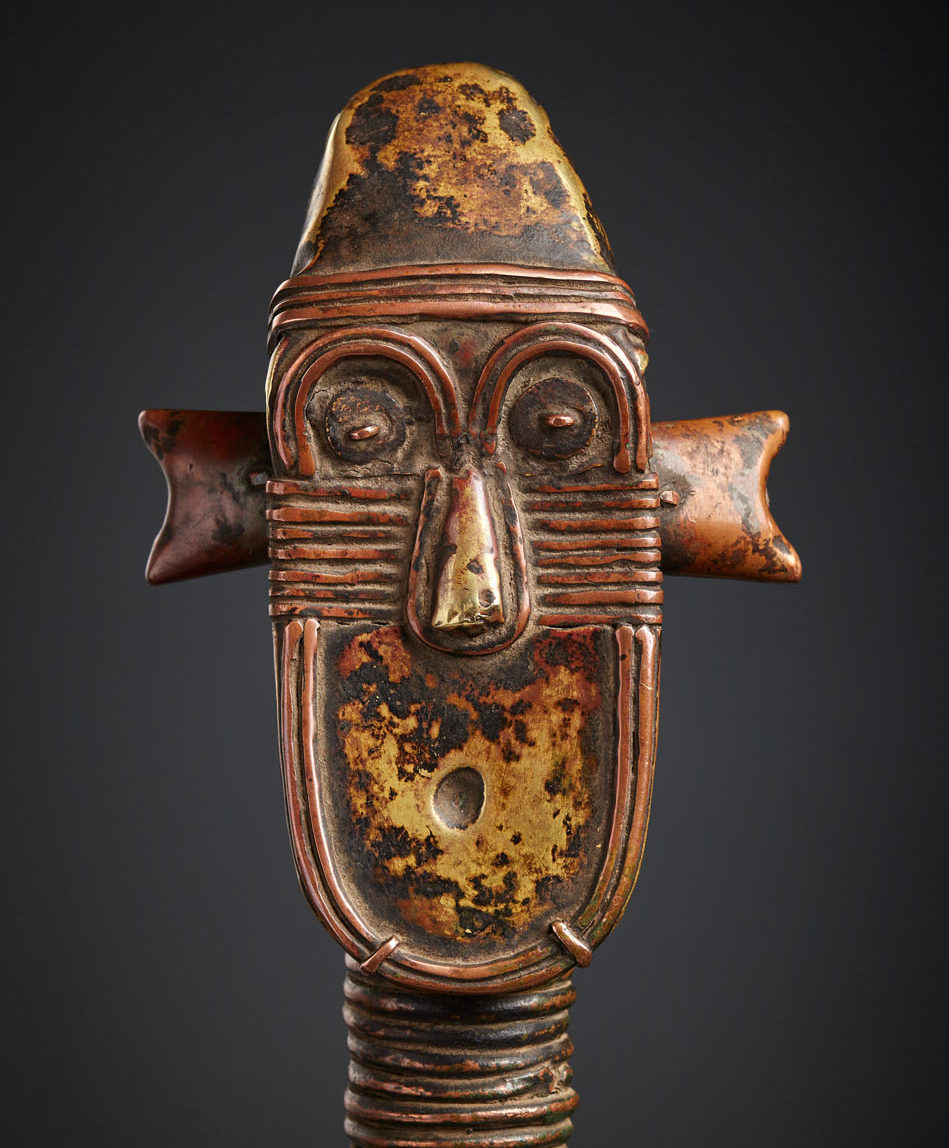
Sculptural element from a reliquary ensemble – Gabon, Kota Shamaye (or „Kota Sango“),
origin: equatorial forrest, africa (afrique équatoriale atlantique)
region: Kongo, gabon, (Massango, Sango, Shamaye)
age : XIX – XXth century
figure: KOTA,“boho-na-bwete”, reliquary figure (figure de reliquaire)
size / material: hight 32,7 cm / head ear to ear 10,5 cm/ rhombus 8,0 cm / neck 3,7 cm / lower base 6,0 cm – wood, brass, copper, bone, leather strings, nails
Here is a second KOTA from a group of three wich also seem to be related stylistically to the „SANGO“ or even further north to the „SHAMAYE“.
This breathtaking work was clearly completed by a craftsman with unique skills and perfection and is therefor a masterpiece in its own class.
Like the two other KOTA`s in our collection this fine example was also found and sold by Mr. Issah Mbohou, Bruxelles.
All three objetcs are from the same african village, area and family close to Ndumu group in the region of the river Sébé.
Based on the information received from the remaining family they could date back three or even four generations. The name of the family chief changed in the course of time with the pre-colonial name beeing Ongwé Mboumu wich than ended up beeing Jan Pierre Mbumu post colonial.
These objects have stayed within the family longer than a century until they were sold to our collection one after one!
All three KOTAS still remain united in the collection today and are a rare and unique group unmatched in the world. They believed all to be made by the same hand.
The human form reduced to the essence is characteristic for this group of reliquary figures produced by the SANGO or SHAMAYE of gabon.
This KOTA figure is associated to be one oft he rarest and most fascinating forms. It generates a strong power of expression despite its minimalistic character.
Under a trapeziod forhead we glance at a face that contains eyes made of slice of bones held in place by cramps. Under a fine, detailed nose framed by horizontal and narrowed down copper lineage a long brass plate affixed together with a hollow mouth creates a lifely yet fearless expression. What a sight this figure must have been as special rites would take place at night or dawn with only the moonlight or fire refelcting off the surface.
Strikingly worked eyebrows-, forhead- and outlines on the lower part oft the face are all made of finley hammered copper strips that can only be completed in this perfection by the hand of a master of a lost time.
The head of this effegy rests on a elongated neck covered and wrapped with three sections of solid copper wire.
A perfect balance is completed by the stylized ears pointing sharply outwards from the sides oft the head in a dark shade of cooper red highligthing the harmony between the different colors of the metal.
The „hair“ style is sublime and shows similarity to a truncated cone that tsogo women reportedly wore around 1860/1870.
Shoulders and arms are executed as a small rhompus that suggests the indictaion of a body highlighted by rows of brass nails in the front and on top.
What gives this „middle KOTA“ its subtle beauty is the natural patina established over centuries. But the true brilliance is the iconic expression that can only be created by a master sculpter of his era.
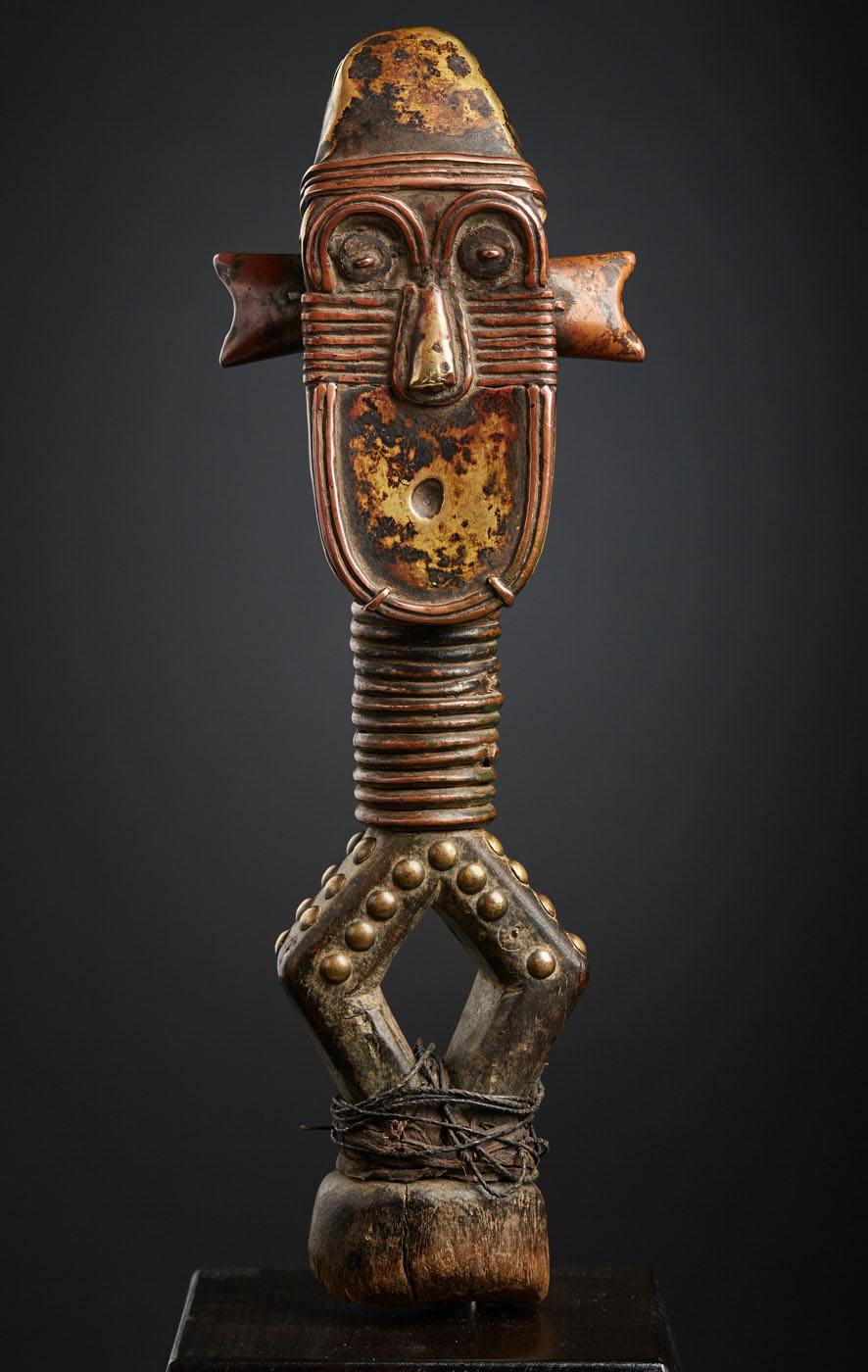
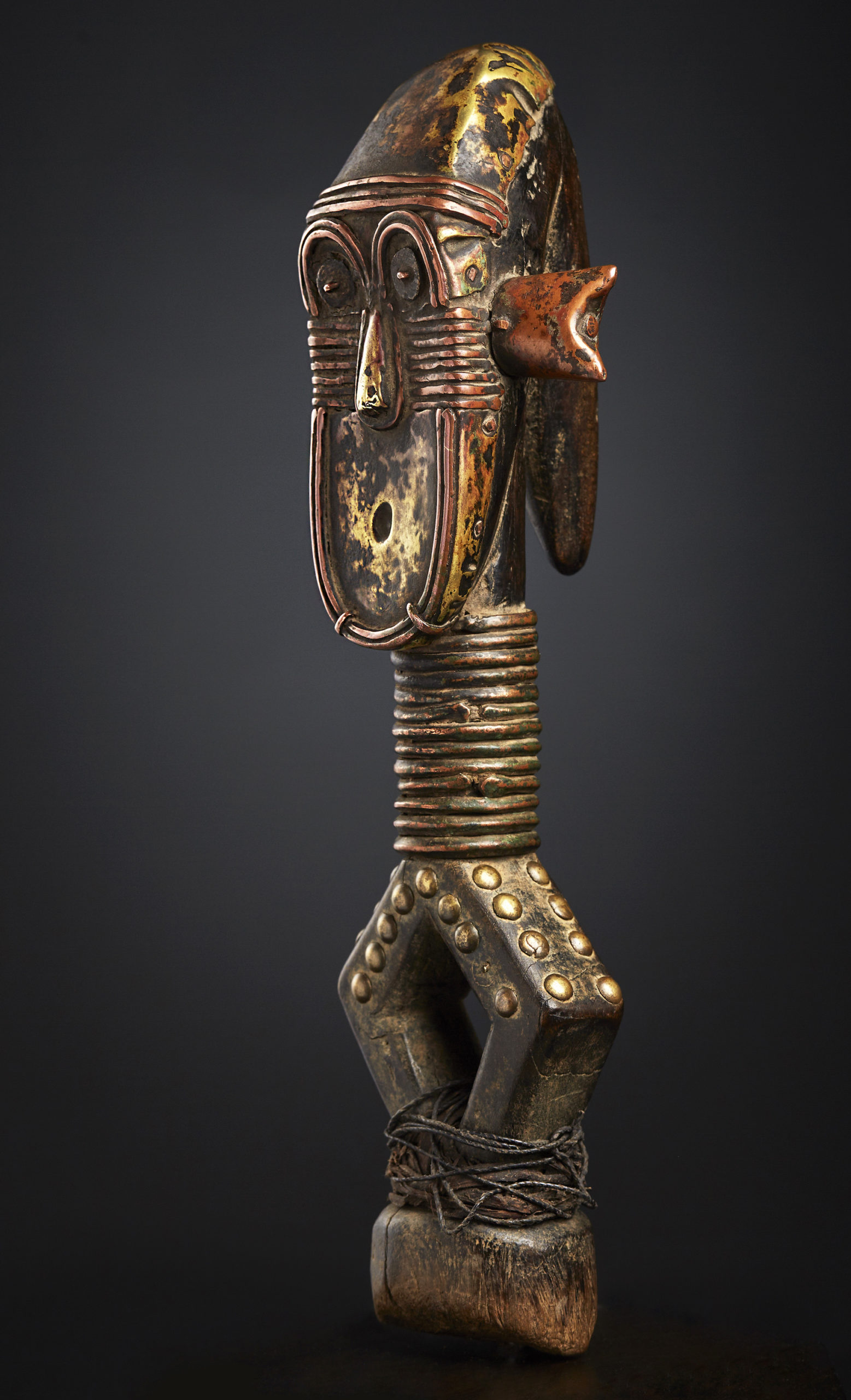
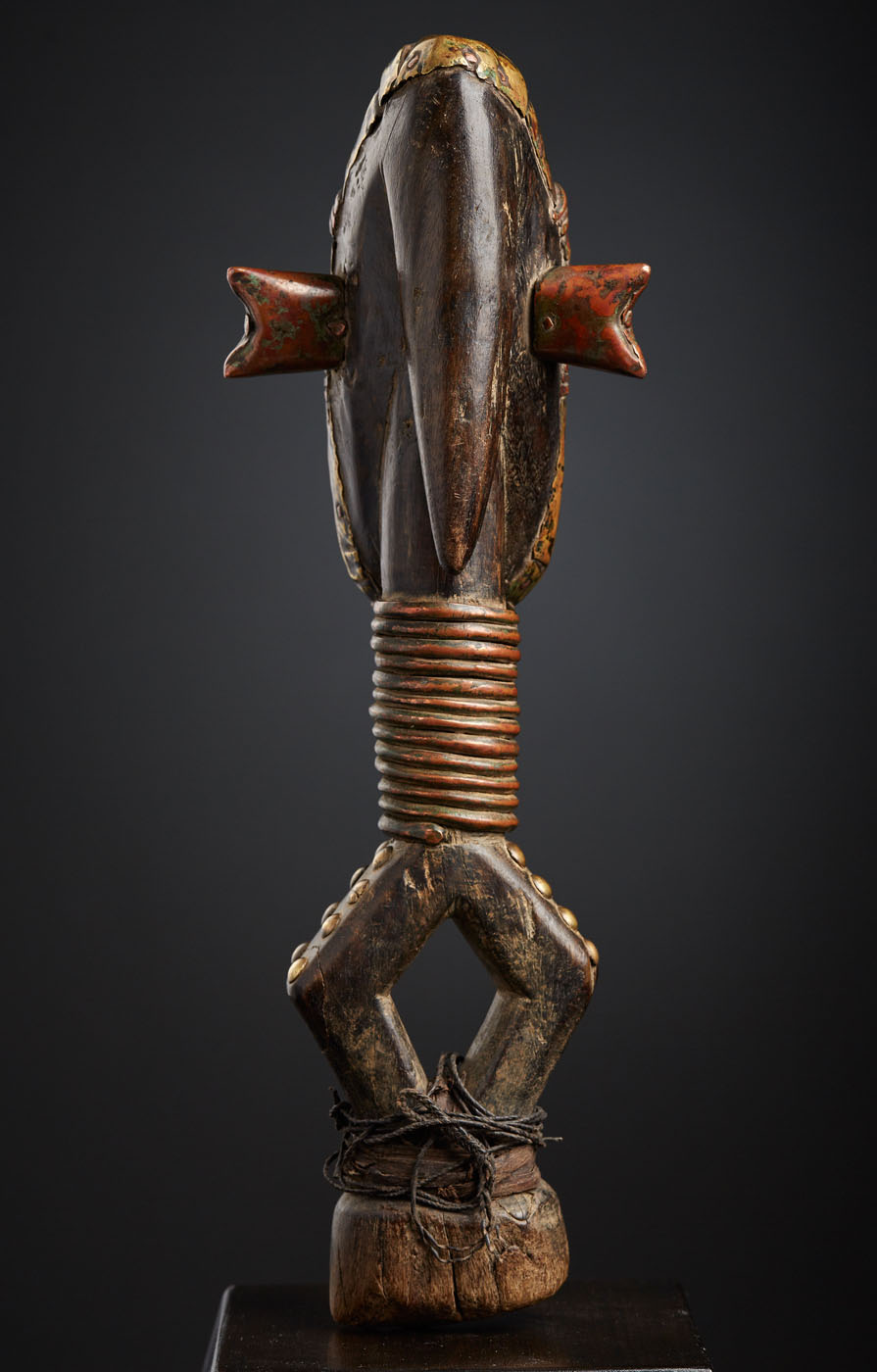
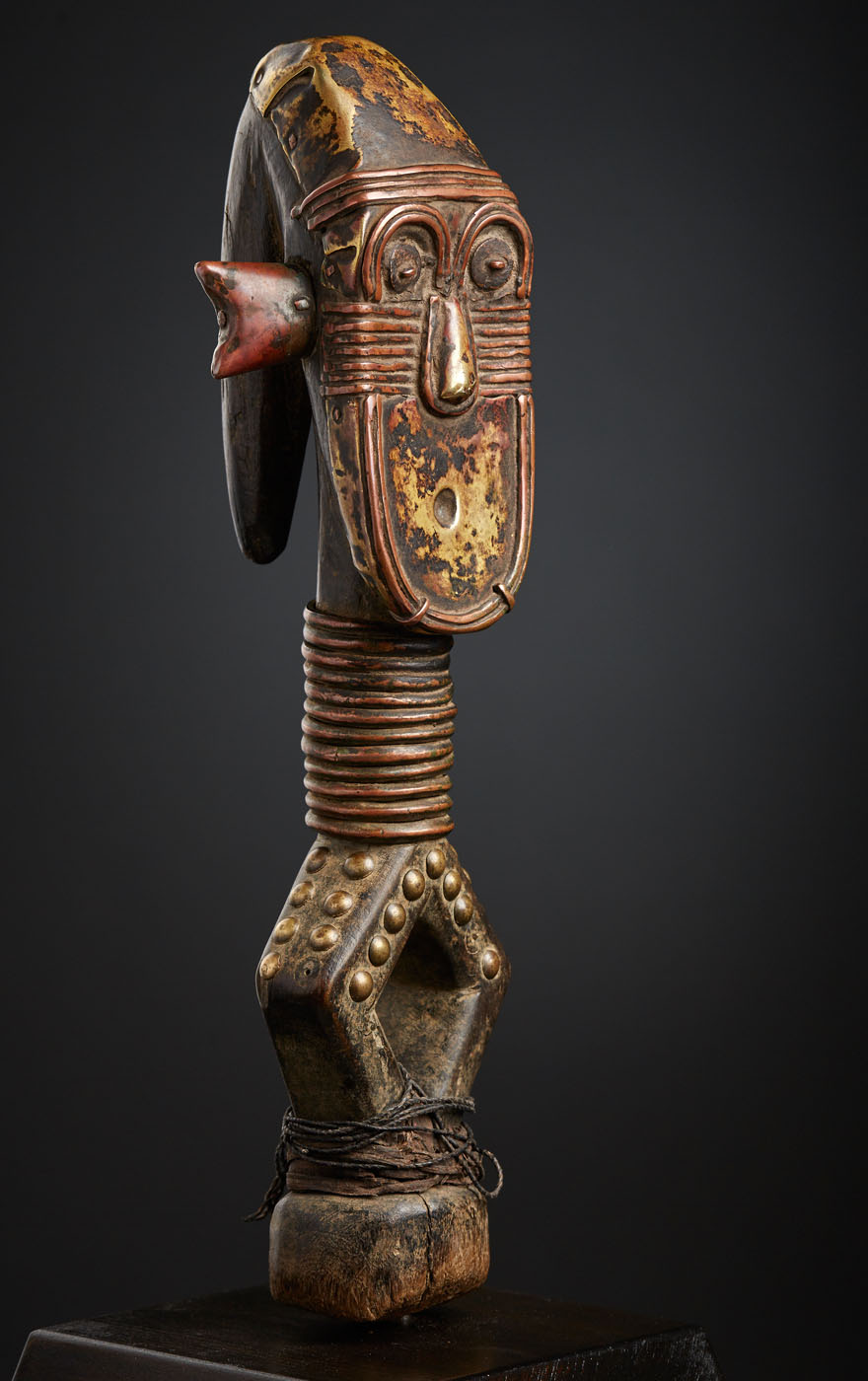
References:
See similar details on the „nose“ // horizontal and narrowed down copper lineage ,outline of copper strips on the lower mouth part“ on a Kota Mindumu figure in the book „Eternal Ancestors, the Metropolitan Museum of modern art 2007, object 76, page 250
See similar details on the „rhombus brass nails“ on a Kota Sango reliquary figure sold by sothebys 05th of May 2017 // Private collection USA
See similar details on use of „brass nails“ on a not related masterpiece that clearly dated before 1910 // deux cuilleres auctioned by christies //from the collection of Bernhard et Bertrand Bottet, nice
See similar details on use of „brass nails“ on a not related masterpiece that clearly dated before 1910 // D.R. Congo Vili // Collection Alain Guisson, Bruxelles
See similar details on „height“ on a Kota Sangu, Mbumba reliquary figure, book „Afrikanische Kunst – aus der Sammlung Barbier-Mueller, Prestek Verlag 1988
See similar details on the hair style „truncated cone“ from a Kota reliquary figure on a photo published May 06th 2013, from the Gustave and Franyo Schindler Collection of african sculpture

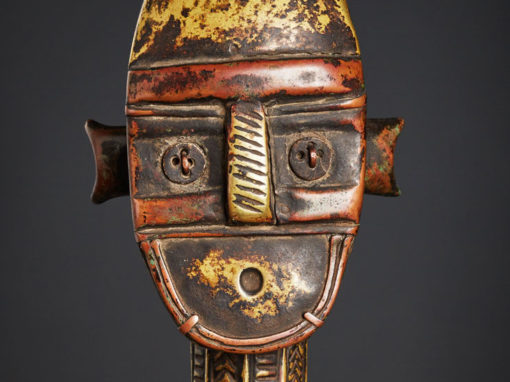
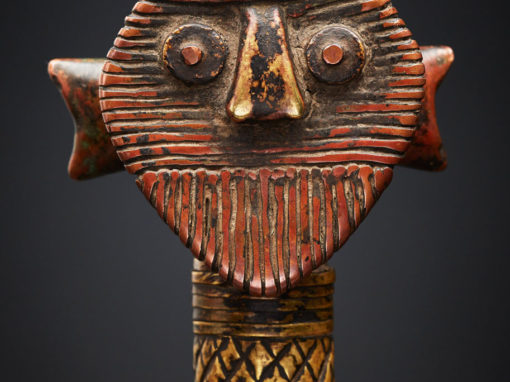
Markus
17. März 2021 at 3:16
Very nice post. I definitely love this site. Continue the good work!